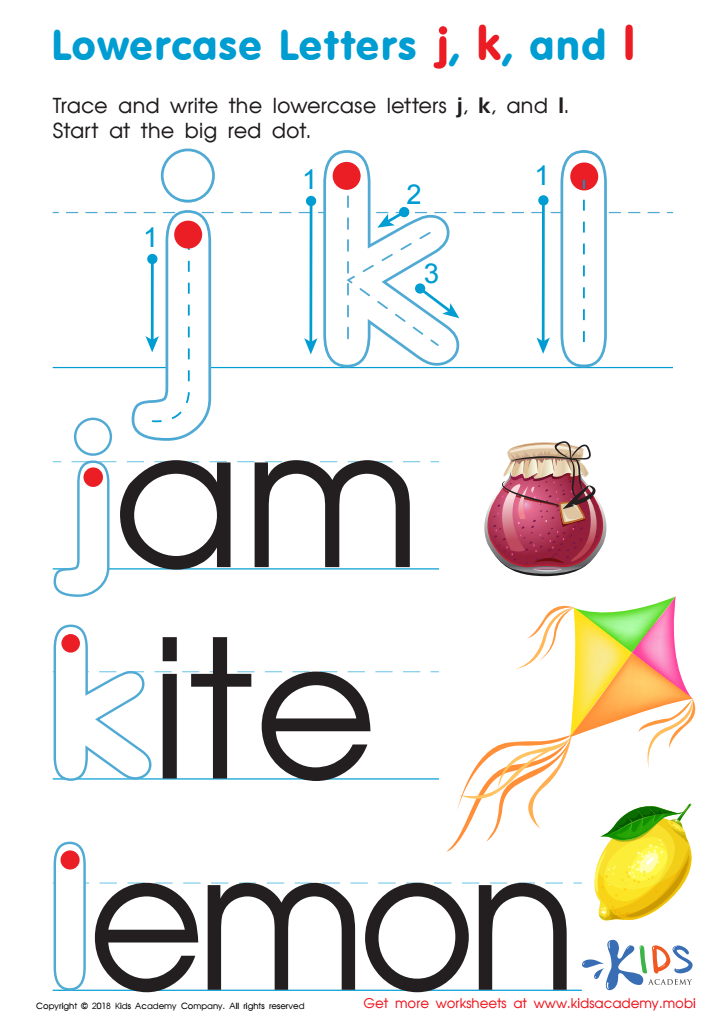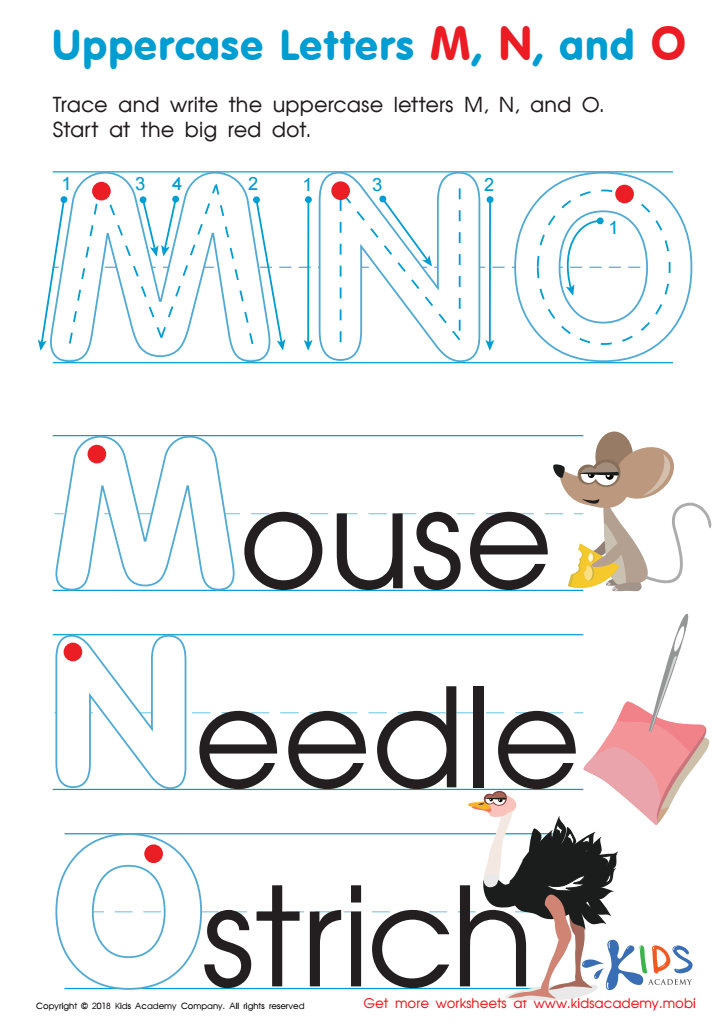Letter Tracing Practice Normal Tracing Letters Worksheets for Ages 5-8
3 filtered results
-
From - To
Welcome to our "Letter Tracing Practice" worksheets, designed specifically for children ages 5-8 to enhance their writing skills! Our fun and engaging worksheets provide a perfect blend of education and enjoyment, guiding young learners as they practice tracing normal letters. With colorful illustrations and easy-to-follow instructions, these worksheets help children improve their fine motor skills and develop confidence in writing. Ideal for classroom activities or at-home learning, our resources ensure children can practice letter formation in an interactive way. Start your child's writing journey today and watch them thrive as they master the alphabet!


Lowercase Letters j k l Worksheet


Uppercase Letters M, N, and O Worksheet


Uppercase Letters P, Q, and R Worksheet
Letter tracing practice is a crucial activity for children aged 5-8 as it lays the foundation for their writing skills and overall literacy development. During this stage, fine motor skills are rapidly developing, and tracing letters helps improve hand-eye coordination and control. By engaging in normal tracing activities, children learn the proper formation of letters, reinforcing their understanding of the alphabet, which is essential for reading and writing.
Additionally, letter tracing promotes cognitive development. As children trace letters, they begin to associate the shapes with corresponding sounds, enhancing phonemic awareness. This connection is vital for developing early literacy skills, preparing them for reading.
Letter tracing provides an opportunity for parents and teachers to foster a positive learning environment. It encourages patience and focus, helping children develop a growth mindset as they see their progress. Moreover, consistent tracing practice can boost a child's confidence in their writing abilities, paving the way for lifelong learning.
In summary, letter tracing is an effective and engaging tool for helping young learners build essential writing and literacy skills, making it important for parents and teachers to prioritize this practice in early education settings.
 Assign to My Students
Assign to My Students





















